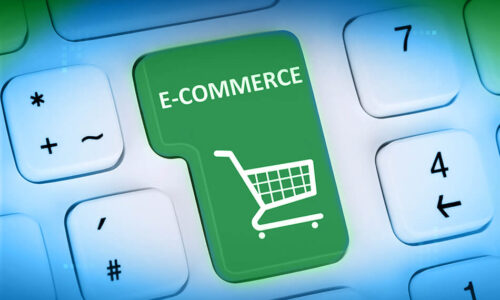
The beauty industry is one of the fastest-growing markets, but competition is fierce. Large corporations dominate store shelves, while small brands often struggle to gain visibility. This is where e-commerce changes everything.
By selling online, small beauty brands can compete on a global stage without the overhead costs of multiple stores, large staff, or expensive advertising campaigns. A well-built online store offers equal opportunity for visibility, customer engagement, and revenue growth.
E-commerce is not just about selling products; it is about creating an experience where customers can discover, learn about, and trust your brand.
Why E-Commerce Is a Game-Changer for Small Beauty Brands
Small beauty brands no longer need massive advertising budgets or expensive retail space to compete. Online platforms allow them to stand alongside established names by offering an affordable entry point, since launching an online shop costs far less than opening a physical boutique. A well-designed website also gives equal opportunity for exposure, enabling smaller brands to appear just as professional as global competitors. With scalability built in, businesses can start small and expand as their customer base grows, without taking on a heavy financial burden. Most importantly, e-commerce eliminates the need for middlemen, enabling direct communication with customers and fostering stronger relationships from the outset.
How to Reach More Customers With Less Effort?
Physical stores limit you to customers who walk through your door. Online stores, however, allow you to sell around the clock and across borders.
Key benefits of online reach include:
- 24/7 availability: Customers can shop at any time, from anywhere.
- Global audience: Expand beyond your local city or country.
- Increased convenience: Buyers appreciate the ability to browse and purchase from their homes.
- Reduced dependency on location: Growth is no longer tied to a single shop or foot traffic.
A small skincare brand can sell to customers in Europe, Asia, or North America by setting up shipping and online payments, something impossible with a single local shop.
8 Proven E-Commerce Tactics to Boost Sales for Small Beauty Brands
Selling beauty products online isn’t just about listing items on a website—it’s about using smart tactics that make customers notice, trust, and buy from your brand. Small beauty businesses can compete with big names by applying focused strategies that improve visibility, create stronger customer relationships, and drive more sales. Below are eight proven e-commerce tactics that can help your beauty brand grow faster and smarter.
1- Create a Digital Storefront That Sells
Your website is more than just a place to list products; it is the digital reflection of your brand. Customers will form an opinion in seconds, and that opinion directly impacts sales.
Focus on these essentials:
- Clean and professional design: Avoid clutter; use branding that matches your product’s identity.
- High-quality visuals: Beauty products need sharp, appealing images and videos that highlight textures, colors, and packaging.
- Simple navigation: Categories such as skincare, makeup, or haircare help buyers find products quickly.
- Detailed product descriptions: Include ingredients, benefits, instructions, and certifications (organic, cruelty-free, etc.).
- Mobile-friendly experience: Most buyers shop using their phones, so your site must work flawlessly on all devices.
2- Use Data to Grow Smarter
One of the biggest advantages of selling online is access to real-time data. Instead of guessing, you can rely on insights to make informed decisions.
Examples of data-driven growth:
- Best-sellers: Track which products bring the most revenue and promote them more.
- Customer behavior: See how long visitors stay, what pages they view, and when they abandon carts.
- Inventory planning: Stock up on items in demand while reducing less popular ones.
- Personalized offers: Use purchase history to recommend products, such as matching lip shades with skincare routines.
Data removes the guesswork and helps small brands act strategically instead of blindly.
3- Build Trust Through Social Proof
Beauty products require trust because customers are applying them to their skin, hair, or body. Buyers want to feel confident in their purchase. Social proof makes that possible.
Ways to build trust:
- Customer reviews: Ratings and comments show transparency.
- Testimonials: Highlight customer stories on your website and social media.
- Before-and-after visuals: Demonstrate the product’s effectiveness.
- User-generated content: Encourage customers to share photos or videos using your products.
Social proof works as modern word-of-mouth marketing. A single authentic review can be more persuasive than any advertisement. According to a McKinsey report, the global beauty market continues to grow rapidly, creating more opportunities for smaller brands to stand out through e-commerce.
4- Run Targeted Ads to Drive Sales
Traditional advertising is expensive and imprecise. Digital ads give you precision and affordability.
Advantages of targeted online ads:
- Budget control: Start with small campaigns and scale as sales increase.
- Real-time tracking: Monitor which ads work and adjust instantly.
- Better return on investment: You pay only for clicks or views from your selected audience.
- Exact audience targeting: Reach people by gender, age, location, and interests.
Example: A haircare brand can target women aged 18–35 who have shown interest in natural beauty products on Instagram.
A recent Forbes article shows that social commerce drives a more than 50% share of beauty sales globally, making online ads even more impactful for emerging brands.
5- Make the Checkout Experience Effortless
A complicated checkout process causes abandoned carts. Simplifying this stage increases conversions dramatically.
Key elements of a smooth checkout:
- Multiple payment methods: Credit cards, PayPal, and digital wallets.
- Upfront shipping details: Show costs before checkout to avoid surprises.
- Guest checkout option: Do not force customers to create accounts.
- Fast loading speed: Every second of delay increases cart abandonment.
- Secure transactions: Use trusted payment gateways and security certificates.
6- Turn First-Time Buyers Into Loyal Fans
Customer retention is more profitable than acquisition. Winning repeat buyers ensures steady revenue growth.
Practical strategies to build loyalty:
- Email marketing: Send product tips, new launches, and exclusive offers.
- Loyalty programs: Reward repeat customers with points or discounts.
- Personalized experiences: Recommend products based on purchase history.
- Community building: Engage customers on social media with tutorials, Q&A sessions, or giveaways.
When customers feel valued, they are more likely to return and recommend your brand to others.
7- Collaborate With Micro-Influencers and Ambassadors
Influencer marketing is powerful, but it does not always require celebrities with millions of followers. Micro-influencers often bring better engagement at a lower cost.
Why micro-influencers matter:
- Higher trust levels: Their audiences see them as relatable and genuine.
- Cost-effectiveness: Campaigns are affordable compared to celebrity partnerships.
- Niche audiences: They often specialize in beauty, skincare, or wellness.
- Authenticity: Followers feel their endorsements are honest, not scripted.
Brand ambassadors can also be recruited from loyal customers who are genuinely passionate about your products.
8- Start Lean, Improve Often
Perfection is not required to begin. Small brands should focus on launching quickly, testing ideas, and making gradual improvements.
Smart approaches include:
- Start with a limited product range: Ensure quality before expanding.
- Track and adjust regularly: Learn from feedback and adapt strategies.
- Invest in essentials first: Website, payment system, and product photography should be top priorities.
- Scale step by step: Expand marketing, features, and product lines as revenue grows.
Growth happens through consistent improvement, not overnight success.
E-commerce gives small beauty brands the power to compete with larger players and reach customers far beyond local markets. By applying these 8 proven tactics—from building a professional storefront to running targeted ads and creating loyal customer communities—you can boost sales and strengthen your brand’s reputation.
The beauty industry rewards those who take action and keep improving. Start small, refine your strategies, and let your online store do the heavy lifting.
At Dot IT, we specialize in building e-commerce solutions that help small beauty brands grow. From creating powerful websites to implementing digital marketing strategies, our team can give your brand the online presence it deserves. Ready to boost your beauty brand sales? Let’s make it happen together.





